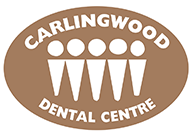From a recent report in the ODA Journal (January/February 2012)
Introduction
In February 1941, Mr. H. was a seven-year-old boy living with his Dutch family on the island of Sumatra (now Indonesia), when the hostilities of the Second World War engulfed his family and shattered his peaceful childhood. The invading Japanese military forces occupied his island and imprisoned young Mr. H. in the Tjikudapateuh concentration camp, separating him from his parents and family. The young boy would become known as the Cricket (Jangkrik in Malay) because he was skinny, fearless, fast and resourceful. These qualities would help Mr. H. to survive four-and-a-half years of imprisonment until his release in August 1945.
Case Report
History
Figure 1Initial presentation.
During his interment Mr. H. suffered from severe malnutrition during the crucial years of his dental development and as a consequence he would never enjoy the benefits of good dental health. Throughout his adult life, Mr. H. pressed for compensation to restore his dentition. Finally in 2010, a settlement was negotiated between the Netherland and Japan that enabled Mr. H. to reconstruct his dentition with implant-supported over dentures.
Figure 2Radiographic guides used for the CT scan.
Figures 3, 4, & 5CT scan images and surgical guide.
Initial Presentation and Treatment
The existing condition consisted of partial upper (PUD) and partial lower (PLD) dentures. There were five maxillary and four mandibular teeth remaining, all of which had a poor short-term prognosis (Figure 1).
Treatment began with maxillary and mandibular clearance, followed by relining the existing PUD and PLD for use as transitional dentures. Maxillary and mandibular radiographic guides were made in preparation for the CT scan (Figure 2). Novel Guide computer software was used to virtually place and parallel the implants on the CT scan image and surgical guides were constructed (Figures 3, 4, and 5).
Utilizing guided surgery four maxillary and four mandibular implants were inserted and healing abutments placed (Figure 6). Due to the thin buccal bone in the region of teeth 13 and 23, an allograft of Puros demineralized freeze-dried bones with a Cytoplast membrane was placed. Four months later, locator attachments were placed and attached to the new CUD and CLD with a pick-up reline impression (Figures 7 & 8). Immediately following the completion of the treatment, Mr. H. returned home and later reported how much he enjoyed a meal of corn on the cob! (Figures 7, 9, & 11)
Conclusion
Much of what Mr. H. witness and endured during his internment in the concentration camp would stay with him throughout his life. In adulthood, Mr. H. reached a level of strength, maturity, insight, and awareness to live with the past. In 1987, he had the courage to confront that past and paid a return visit to the concentration camp. Mr. H. became a successful engineer, is now semi-retired and lives with his wife in Ottawa.
-----------------
Dr. Connelly is a 1984 graduate of the Schulich School of Medicine and Dentistry, University of Western Ontario. He maintains a general practice in Ottawa, and may be reached atcarlingwooddental@rogers.com or at 613-728-1874.
Dr. Sisson obtained her dental degree in 1995 from the Faculty of Dentistry, University of Manitoba. She currently maintains a general practice in Ottawa, and may be reached atcarlingwooddental@rogers.com or at 613-728-1874.
